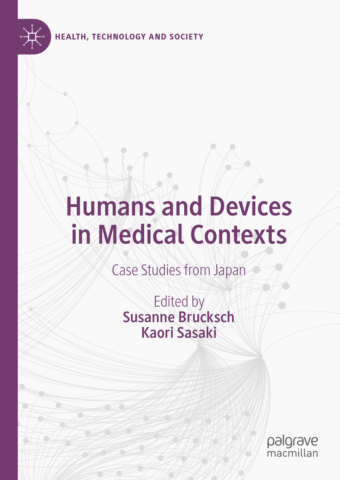Humans and Devices in Medical Contexts in Japan (book project)
March 2017 - January 2022
With Kaori Sasaki (Sapporo Medical University)
Published in June 2021. The anthology includes contributions by Susanne Brucksch, Kaori Sasaki, Kevin Wiggert, Maika Nakao, Shi Lin Loh, Yuji Shiroshita, Naonori Kodate, Ken’ichiro Taneda, Akiyo Yumoto, Yoshiko Sugiyama, Pierre-Yves Donzé, Kazuo Tanishita, Patrick Grüneberg and Takashi Nakajima.
Over the past decades, there has been an increase in technological innovation in hospitals, influencing medical practices and regulatory requirements alike. Many technologies and electronic appliances nowadays in use took their roots in the second half of the 19th century, and were increasingly merged into clinics and hospitals during the following century. At present, there can be observed a thrust of technological progress at high pace in the field of biomedical engineering and medical informatics, which contribute additionally to new configurations of socio-technological settings in hospitals.
The meaning of socio-technical settings in the medical field changes not only with their professional, disciplinary or organisational context, but also with the specific locale. This book project therefore elucidates how the relationship between humans and machines can be specified in medical contexts when the sociocultural dimension of a particular locale is included. More precisely, we explore the ways in which socio–technical settings in medical contexts find varying articulations in a specific locale like Japan. More precisely, the theory chapter introduces various approaches by specifying the Japanese locale (genba) as an example when examining humans and machines in medical contexts. Thereafter, several contributors reflect on emerging high-technology and the arising requirements and controversies regarding aspects such as experiences with radiation, public health, regulation, patient security, end-of-life decisions, engineering, commercialization, and evaluation of novel devices. They situate their case studies of socio-technical settings in hospitals in their given semantic, pragmatic, organisational and/or historical context, thereby enriching academic discussions amongst affiliated disciplines.
With its highly interdisciplinary approach, this edited volume provides novel and deep insights beyond the manifold findings of each case study. Therefore, we think such an anthology is of interest to scholars, practitioners, policy makers and students from various disciplines, including Science and Technology Studies (STS), medical humanities, social sciences, ethics and law, business and innovation studies, as well as biomedical engineering, medicine and public health.
Completed Projects
Recent Publications
Events
Team
Innovation Studies, Science & Technology Studies (STS)
